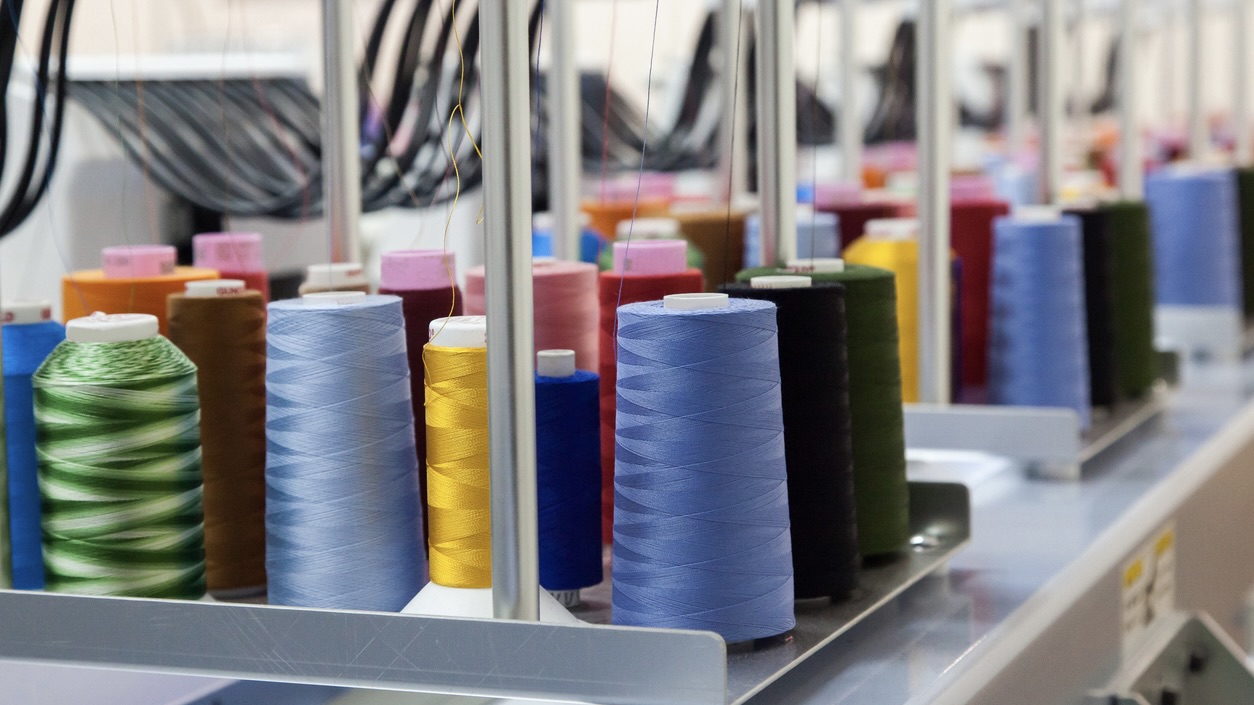Key demands include infrastructural development, financial relief, and policy reforms to sustain competitiveness. Rising labour shortages, volatile raw material prices, and high operational costs remain major concerns.
Published Mar 13, 2025 | 3:00 PM ⚊ Updated Mar 13, 2025 | 3:00 PM

Synopsis: Tamil Nadu’s textile industry, a crucial contributor to India’s garment exports and employment, faces mounting challenges. Industry leaders are urging the state government to address rising operational costs, labour shortages, and policy neglect ahead of the 2025-26 budget.
Tamil Nadu’s textile industry contributes 20 percent of the country’s ready-made garment exports and employs 28 percent of the sector’s workforce.
The state dominates multiple sub-sectors, including spinning, handloom weaving, power loom weaving, processing, knitwear, and apparel manufacturing. Cities such as Coimbatore, Tiruppur, Salem, Karur, and Erode have been instrumental in this growth, helping transform the state into a global textile hub.
Ahead of the 2025-26 state budget on 14 March, industry leaders want the government to address pressing concerns they say are vital to ensure the industry’s continued survival.
Key demands include infrastructural development, financial relief, and policy reforms to sustain competitiveness. Rising labour shortages, volatile raw material prices, and high operational costs remain major concerns.
At the Bharat Textile Expo in Delhi in February, Prime Minister Narendra Modi stated that India is emerging as a global textile powerhouse.
However, according to MP Muthurathinam, chairman of the Tamil Nadu All Entrepreneurs Association, India ranks only sixth in global textile exports, lagging behind smaller nations like Bangladesh.
He argues that while large corporate players benefit from government support, small and medium enterprises (SMEs) struggle with high costs and policy neglect.
According to the Udhayam National Portal, 4,412 micro, small and medium enterprises (MSMEs) in Tamil Nadu shut down during 2024-25, many from the textile sector.
Tamil Nadu’s textile sector employs nearly 400,000 migrant workers, primarily from North India. Many later return to their home states to establish similar industries, creating competition for Tamil Nadu. A similar trend was seen in Kerala, where returning workers contributed to the growth of its textile sector.
Muthurathinam calls for investment in local skill development programmes to retain talent and reduce dependency on migrant labour. He suggests establishing training initiatives in economically weaker districts like Tiruvannamalai to sustain the workforce locally.
Tiruppur alone generates ₹70,000 crore annually, with ₹40,000 crore from exports and ₹30,000 crore from the domestic market. However, the influx of cheap textile imports from Bangladesh and China, benefiting from tax exemptions and lower production costs, has put local manufacturers at a disadvantage.
Muthurathinam stresses that Tamil Nadu’s textile owners have been pushing for stricter import restrictions for seven years to safeguard domestic businesses.
Muthurathinam proposes designating Tiruppur as a “Textile Zone,” akin to Thanjavur’s status as an Agricultural Zone. He argues that Tamil Nadu could develop 20 more textile hubs with structured policies that prioritise domestic orders.
Integrated Textile Parks in low-employment districts could enhance production efficiency. The 2024-25 Budget allocated ₹800 crore for an Integrated Textile Park in Salem and ₹20 crore for 10 mini textile parks in Karur, Erode, and Virudhunagar.
However, Muthurathinam insists these parks must integrate all nine stages of textile production for maximum impact.
With Tamil Nadu holding 55 percent of India’s spinning capacity, the state requires 120 lakh bales of cotton annually, but local farmers supply only 5 lakh bales. The remaining 115 lakh bales must be sourced from northern vendors, adding to costs.
The Indian Cotton Federation reports that Tamil Nadu produced just 1.26 lakh bales in the current season, ranking ninth nationwide.
Muthurathinam urges the establishment of a Tamil Nadu Cotton Corporation to stabilise procurement and pricing. He also calls for budget allocations to boost cotton cultivation and the creation of a State Textile Board to oversee industry policies.
Similarly, electricity costs remain a major concern. Power loom weavers receive 1,000 free electricity units, but garment manufacturers do not.
Muthurathinam calls for extending subsidies across the textile sector, noting that an average garment unit consumes 2,000–3,000 units monthly. Fluctuating electricity prices further strain businesses, reducing their competitiveness.
